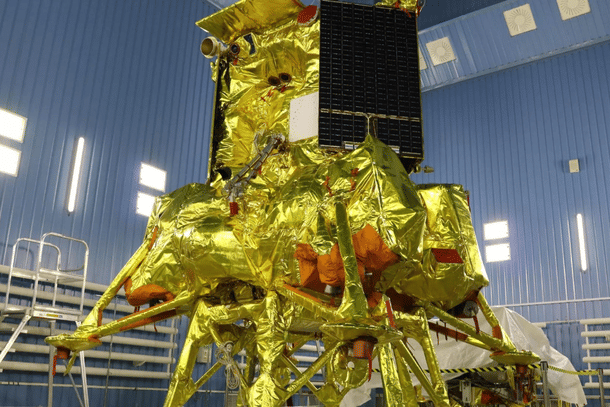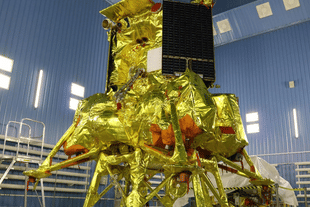Science
Russia To Evacuate Village In Far East For Historic Lunar Lander Mission To South Pole
Swarajya News Staff
Aug 07, 2023, 06:24 PM | Updated 06:24 PM IST
Save & read from anywhere!
Bookmark stories for easy access on any device or the Swarajya app.


Russia's first lunar lander mission in nearly half a century will begin its journey on 11 August, prompting the evacuation of a village in the country's far east in the early morning on launch day.
According to a Reuters report, the residents of the Shakhtinskyi settlement in Russia's Khabarovsk region will be relocated due to their proximity to the area where the rocket boosters are predicted to fall after separation.
The Luna-25 lunar lander, which will be Russia's first since 1976, is scheduled to launch from the Vostochny Cosmodrome. Located approximately 5,550 km east of Moscow, this spaceport is the chosen site for this historic mission.
Russia's Roscosmos space agency is overseeing the launch and ensuring all necessary preparations are in place.
The areas affected by the predicted fall zone of the rocket boosters include the mouth of the Umalta, Ussamakh, Lepikan, Tastakh, Saganar rivers, and the area of the ferry crossing on the Bureya River.
Alexei Maslov, the head of the Verkhnebureinskyi district in the Khabarovsk region, conveyed this information through the Telegram messaging app, said the Reuters report, adding that the residents of Shakhtinskyi will be evacuated.
Luna-25 is set to launch on a Soyuz-2 Fregat booster and, Roscosmos says, will be the first lander to reach the south pole of the Moon, touching down near the Boguslavsky crater.
However, India is the frontrunner to become the first country to land near the Moon's south pole, likely on 23 August.
The primary goal of the Russian mission is to advance soft-landing technologies, conduct research on the internal structure of the Moon, and explore potential resources, such as water.
It is anticipated that the lander will remain operational on the lunar surface for a duration of one year.




